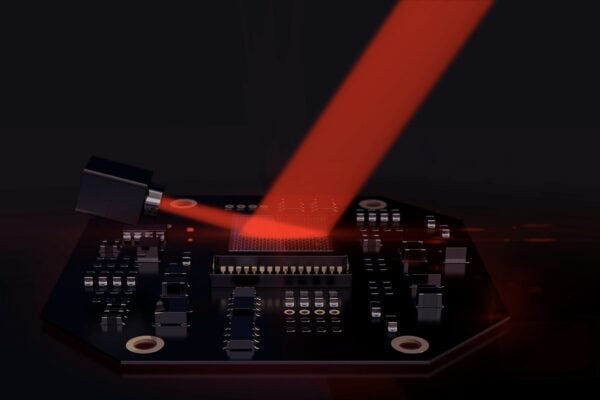
Liquid Crystal Metasurface makes better lidar sensors, claims startup
Gleb Akselrod, CTO and co-founder of Lumotive, explains that the difference to available lidar sensors lies in their beam steering technology. The engineers from Seattle in the US state of Washington use a Liquid Crystal Metasurface (LCM) to control the infrared laser. This means that the entire Lidar sensor requires no mechanically moving parts and thus has the prospect of significantly increased reliability and a longer service life compared to its competitors.
However, the absence of mechanical parts due to the patented LCM technology is not the only unique selling point of the newcomer. The decisive components can be produced using standard semiconductor methods, explains Akselrod. This means that production scales enormously well and the sensors can be manufactured in large quantities at low cost. “We are bringing Moore’s Law into lighting technology,” says Lumotive CEO William Colleran, the other co-founder of the company.
With this technology, however, Lumotive not only wants to produce inexpensive and durable sensors – they should also achieve higher performance compared to the market environment and offer more technical options. The Lumotive lidar sensor scans a 120-degree field of view 20 times per second. The resolution is said to be very high at 0.1 degrees. The LCM technology also enables a unique selling point: it allows the user to jump from one point to another with practically no time delay; Akselrod calls this feature “Random Access Scanning”. This means that the sensor has a “Fast Scan” mode in which it scans objects more intensively once they have been captured. This of course requires a high sensitivity of the sensor. “Compared to MEMS-based devices, we have a 100 times higher light gathering capability,” assures Akselrod.
Lumotive has not yet reached series maturity, but a benchtop version of the sensor is up and running in the laboratory. The first prototypes, which have a form factor comparable to the series device, are expected to be available in the third or fourth quarter of this year. The central sensor module will be produced using semiconductor methods. Lumotive’s semiconductor technology partners are the fabless semiconductor manufacturer Himax and foundry TowerJazz.
More information: www.lumotive.com
Related articles:
Cepton brings MMT lidar technology to Europe
Volvo, Luminar show massive improvements in lidar technology
Bosch invests in Chinese lidar startup
Lidar market on a 43% CAGR, says Yole
 If you enjoyed this article, you will like the following ones: don't miss them by subscribing to :
eeNews on Google News
If you enjoyed this article, you will like the following ones: don't miss them by subscribing to :
eeNews on Google News



